Hiroshima Day: On 6th August Hiroshima Day is observed every year to spread awareness of the horrific effects of the atom bomb blasts and to promote peace politics. During World War II, on this day in 1945, the United States dropped an atomic bomb on Hiroshima, a Japanese city during World War II. The atomic blast was massive and destroyed 90 per cent of the city and killed thousands of people. It killed almost 20,000 soldiers, and 70,000 to 126,000 civilians.
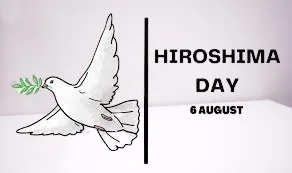
Three days later on 9th August, another city in Japan, Nagasaki was bombed leading to the death of 80,000 people. Hence “Nagasaki Day is observed on 9th August. This was the first time that a nuclear bomb was used in a war other than testing. Since then, no atom bombs or nuclear bombs were used in any war. Hiroshima Day 2023 marks the 78th anniversary of the killings. Nagasaki Day 2023 also marks the 78th anniversary.
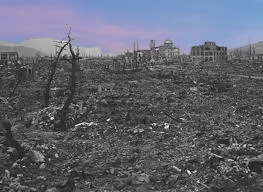
In 1945, the United Nations deployed a nuclear bomb to the city of Hiroshima. This wiped out 39 percent of the civilians in the city. The US created two atomic bombs named ‘The Little Boy’ ( A Uranium Gun- Type Bomb, drooped on Hiroshima ) dropped in the city of Hiroshima and ‘The Fat Man’ ( A Plutonium Bomb used for the nuclear attack on Nagasaki ) in the city of Nagasaki on August 6 and 9 respectively.
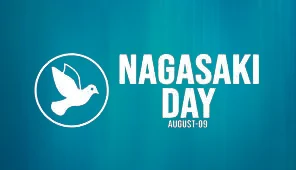
The uranium bomb detonated over Hiroshima on 6 August 1945 had an explosive yield equal to 15,000 tonnes of TNT. It razed and burnt around 70 per cent of all buildings and caused an estimated 140,000 deaths by the end of 1945, along with increased rates of cancer and chronic disease among the survivors.
A slightly larger plutonium bomb exploded over Nagasaki three days later levelled 6.7 sq km. of the city and killed 74,000 people by the end of 1945. Ground temperatures reached 4,000°C and radioactive rain poured down.
Hiroshima Day
Hiroshima Day is observed every year on August 6 to promote peace politics and raise awareness of the effects of the bomb attack on Hiroshima. Hiroshima city was attacked by an atomic weapon that killed thousands of lives instantly on August 6, 1945. Hiroshima in Japan was the first city to be attacked by a nuclear bomb.
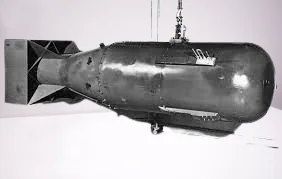
In 1945, the United Nations deployed a nuclear bomb to the city of Hiroshima. This wiped out 39 percent of the civilians in the city. The US created two atomic bombs named ‘The Little Boy’ dropped in the city of Hiroshima and ‘The Fat Man’ in the city of Nagasaki on August 6 and 9 respectively.
Nagasaki Day
Nagasaki Day is observed every year on August 9 to promote peace politics and raise awareness of the effects of the bomb attack on Nagasaki. Nagasaki city was attacked by a second atomic weapon that killed thousands of lives instantly on August 9, 1945. Hiroshima in Japan was the first city to be attacked by a nuclear bomb.
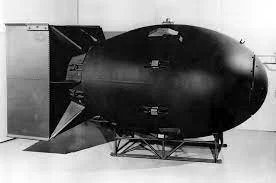
History of Hiroshima Day and Nagasaki Day
- During World War II Japan fought against the US and Allies. With the surrender of Germany on 8th May 1945, the war in Europe had concluded. But the war in the Pacific continued between the Allies and Japan.
- At the Potsdam Declaration in July 1945, the Allies asked Japan for an unconditional surrender. However this was ignored by Japan and it continued waging the war.
- Relations between Japan and the US worsened, especially after Japanese forces decided to take an aim at Indochina with the intention of capturing the oil-rich areas of the East Indies.
- Therefore, US president Harry Truman authorised the use of atomic bombs in order to make Japan surrender in WWII.
- As a result, the two kinds of atomic bomb developed as a result of the Manhattan Project in 1940s were used. The ‘Little Boy’, a Uranium Bomb was dropped in the city of Hiroshima on 6th August 1945 and ‘The Fat Man’, a Plutonium bomb, in the city of Nagasaki 9 August 1945.
The reason we know this is that the extent of the damage in Hiroshima and Nagasaki in 1945 made it nearly impossible to provide aid. In Hiroshima 90 per cent of physicians and nurses were killed or injured; 42 of 45 hospitals were rendered non-functional; and 70 per cent of victims had combined injuries including, in most cases, severe burns.
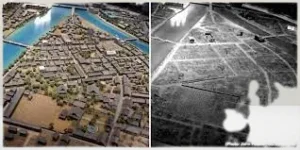
All the dedicated burn beds around the world would be insufficient to care for the survivors of a single nuclear bomb on any city.
In Hiroshima and Nagasaki, most victims died without any care to ease their suffering. Some of those who entered the cities after the bombings to provide assistance also died from the radiation.
It takes around 10 seconds for the fireball from a nuclear explosion to reach its maximum size, but the effects last for decades and span across generations.
Five to six years after the bombings, the incidence of leukaemia increased noticeably among survivors. After about a decade, survivors began suffering from thyroid, breast, lung and other cancers at higher than normal rates.
Pregnant women exposed to the bombings experienced higher rates of miscarriage and deaths among their infants; their children were more likely to have intellectual disabilities, impaired growth and an increased risk of developing cancer.
And for all survivors, cancers related to radiation exposure still continue to increase throughout their lifespan, even to this day, seven decades later.
The aerial bombings together killed between 129,000 and 226,000 people, most of whom were civilians, and remain the only use of nuclear weapons in an armed conflict. Japan surrendered to the Allies on 15 August, six days after the bombing of Nagasaki and the Soviet Union’s declaration of war against Japan and invasion of Japanese-occupied Manchuria. The Japanese government signed the instrument of surrender on 2 September, effectively ending the war.
As on March 2022, Japan had 118,935 survivors of the two nuclear attacks, known as hibakusha. The survivors of the bombings are called hibakusha a Japanese word that literally translates to “explosion-affected people”. The Japanese government has recognized about 650,000 people as hibakusha. As of March 31, 2022, 118,935 were still alive, mostly in Japan.
While the bombings effectively ended WWII by bringing about the surrender of Japan, the war’s end came at a terrible price: Two cities were completely destroyed and over 200,000—mostly civilian—lives were lost, with tens of thousands succumbing to radiation-related injuries and illness in the aftermath of this devastation.
Hiroshima was subsequently struck by Typhoon Ida on 17 September 1945. More than half the bridges were destroyed, and the roads and railroads were damaged, further devastating the city. The population increased from 83,000 soon after the bombing to 146,000 in February 1946. The city was rebuilt after the war, with help from the national government through the Hiroshima Peace Memorial City Construction Law passed in 1949. It provided financial assistance for reconstruction, along with land donated that was previously owned by the national government and used for military purposes.
In 1949, a design was selected for the Hiroshima Peace Memorial Park. Hiroshima Prefectural Industrial Promotion Hall, the closest surviving building to the location of the bomb’s detonation, was designated the Hiroshima Peace Memorial. The Hiroshima Peace Memorial Museum was opened in 1955 in the Peace Park. Hiroshima also contains a Peace Pagoda, built in 1966 by Nipponzan-Myohoji.
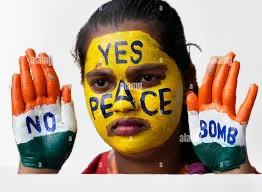
On January 27, 1981, the Atomic Bombing Relic Selecting Committee of Hiroshima announced to build commemorative plaques at nine historical sites related to the bombing in the year. Genbaku Dome, Shima Hospital (hypocenter), Motoyasu Bridge all unveiled plaques with historical photographs and descriptions. The rest sites planned including Hondō Shopping Street, Motomachi No.2 Army Hospital site, Hiroshima Red Cross Hospital, Fukuromachi Elementary School, Hiroshima City Hall and Hiroshima Station. The committee also planned to establish 30 commemorative plaques in three years.
Nagasaki was also rebuilt after the war, but was dramatically changed in the process. The pace of reconstruction was initially slow, and the first simple emergency dwellings were not provided until 1946. The focus on redevelopment was the replacement of war industries with foreign trade, shipbuilding and fishing.
This was formally declared when the Nagasaki International Culture City Reconstruction Law was passed in May 1949. New temples were built, as well as new churches owing to an increase in the presence of Christianity. Some of the rubble was left as a memorial, such as a torii at Sannō Shrine, and an arch near ground zero. New structures were also raised as memorials, such as the Nagasaki Atomic Bomb Museum, which was opened in the mid-1990s.
By the end of 1945, the Atomic bombings of Hiroshima and Nagasaki had killed an estimated 140,000 people in Hiroshima, and a further 74,000 in Nagasaki. In the years that followed, many of the survivors would face leukemia, cancer, or other terrible side effects from the radiation.
To read other articles from the general knowledge sections, please visit read4knowledge.